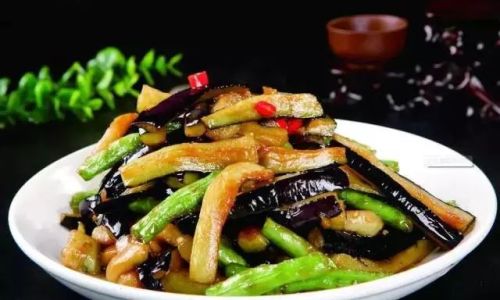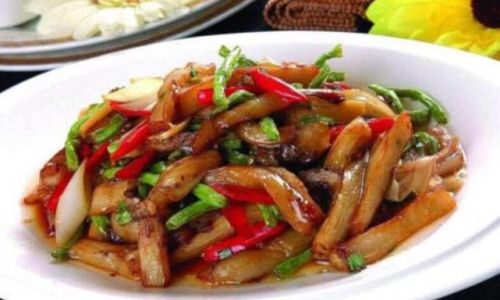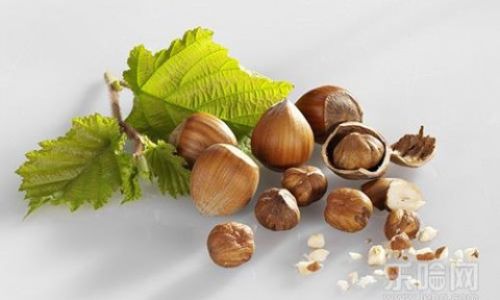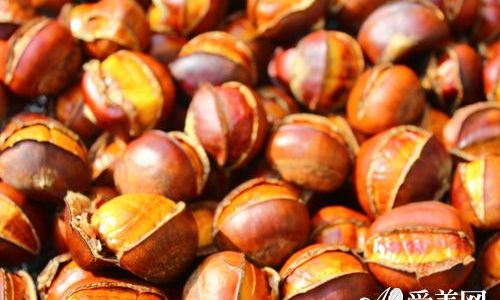Eggplant, with its velvety texture and ability to absorb flavors, is a beloved ingredient in cuisines worldwide. Yet, home cooks often face a frustrating challenge: one moment, the eggplant is a vibrant purple, and the next, it transforms into a dull, unappetizing brown during cooking. This discoloration not only affects the dish’s appearance but can also alter its taste and texture. The good news? Achieving perfectly cooked, non-discolored eggplant is simpler than you think. By understanding the science behind browning and mastering a few key techniques, you can elevate your stir-fries to restaurant-quality dishes. This article delves into the causes of eggplant discoloration and provides actionable, easy-to-follow tips to keep your eggplant looking and tasting its best.
Why Does Eggplant Turn Brown?
Before diving into solutions, it’s essential to grasp why eggplant discolors. Like apples, potatoes, and avocados, eggplant contains enzymes called polyphenol oxidases (PPOs). When the flesh is exposed to air, these enzymes react with oxygen, initiating a process called enzymatic browning. This reaction produces melanin, the same pigment that causes bruises on fruit and rust-like stains on vegetables. Additionally, heat accelerates this reaction, making stir-frying a particularly tricky method to master.

Technique 1: Salting—The Classic Prep Step
Salting eggplant before cooking is a time-honored tradition in many kitchens, and for good reason. This method serves dual purposes: it reduces bitterness (a trait in some eggplant varieties) and minimizes discoloration. Here’s how it works:
- Salt Application: Slice or cube the eggplant, then generously sprinkle it with kosher or sea salt. Let it sit for 30–60 minutes.
- Moisture Extraction: The salt draws out moisture from the eggplant’s cells through osmosis. This process not only concentrates the flavor but also reduces the water content, which helps achieve a creamier texture during cooking.
- Enzyme Inactivation: As moisture seeps out, it carries away some PPOs, slowing down the browning reaction.
- Rinsing (Optional): After salting, some recipes recommend rinsing the eggplant to remove excess salt. However, if you’re mindful of sodium intake, pat the pieces dry with a kitchen towel instead.
Pro Tip: For quicker results, layer the eggplant slices between paper towels and press gently to absorb moisture faster.
Technique 2: Acidic Ingredients—A Tangy Shield
Acids like vinegar, lemon juice, or citric acid can halt enzymatic browning by lowering the pH of the eggplant’s surface. Here’s how to incorporate them:
- Pre-Soak Method: Submerge eggplant slices in a mixture of water and acid (1 tablespoon of vinegar or lemon juice per cup of water) for 15–20 minutes before cooking.
- Direct Application: Toss the eggplant in acid after slicing but before cooking. This method is faster but may slightly soften the flesh.
- Cooking Liquid: Add a splash of vinegar or a squeeze of lemon juice to the stir-fry during the final minutes of cooking for a subtle flavor boost.
Science Behind It: PPO enzymes function optimally in neutral to alkaline environments. Acids disrupt their activity, effectively putting the brakes on browning.
Technique 3: High-Heat Cooking—Speed Is Key
Eggplant discolors rapidly when exposed to heat for extended periods. To counter this, adopt a “flash-cooking” approach:

- Preheat Your Pan: Use a wok or large skillet and heat it over high heat until it’s smoking hot. Add a neutral oil with a high smoke point (e.g., peanut, grapeseed, or avocado oil).
- Cook in Batches: Avoid overcrowding the pan, as this lowers the temperature and increases cooking time. Stir-fry the eggplant in small batches, ensuring each piece makes contact with the hot surface.
- Maintain Motion: Keep the eggplant moving constantly to prevent uneven cooking and burning.
Why It Works: High heat quickly denatures (deactivates) PPO enzymes, stopping browning in its tracks. It also caramelizes the eggplant’s natural sugars, enhancing flavor.
Technique 4: Oil Management—The Right Amount at the Right Time
Oil acts as a barrier between the eggplant and oxygen, but using too much can lead to soggy results. Follow these guidelines:
- Pre-Toss with Oil: Lightly coat the eggplant in oil before cooking. This creates a protective layer without making the dish greasy.
- Avoid Mid-Cooking Additions: Adding oil midway through cooking can trap moisture, leading to steaming instead of stir-frying.
- Drain Excess Oil: If the eggplant releases oil during cooking, tilt the pan and use a spoon to remove it.
Pro Tip: For crispy edges, dust the eggplant with a thin layer of cornstarch after oiling. This creates a golden crust while sealing in moisture.
Technique 5: Cutting and Prep—Minimize Exposure
The way you cut and handle eggplant affects discoloration. Follow these best practices:
- Cut Just Before Cooking: Slice or cube the eggplant immediately before cooking to limit oxygen exposure.
- Use Stainless Steel Knives: Carbon steel blades can react with eggplant’s acids, causing discoloration. Opt for stainless steel or ceramic knives.
- Size Matters: Uniform, medium-sized pieces cook evenly and reduce the risk of overcooking.
Advanced Tip: For dishes requiring longer cooking times (e.g., braises), partially cook the eggplant in boiling water or a microwave before stir-frying. This par-cooking step softens the flesh without browning.

Technique 6: Blanching—A Pre-Cooking Secret
Blanching eggplant in boiling water for 1–2 minutes before stir-frying can lock in color and texture. Here’s how:
- Boil Water: Fill a pot with water and bring it to a rolling boil. Add a pinch of salt.
- Submerge Eggplant: Add the eggplant pieces and cook until they turn slightly translucent (about 1 minute for thin slices, 2 minutes for cubes).
- Shock in Ice Water: Immediately transfer the eggplant to an ice bath to halt cooking. Drain and pat dry.
Why It Works: Blanching denatures PPO enzymes and collapses the eggplant’s cell structure, reducing moisture loss during stir-frying.
Common Mistakes to Avoid
- Overcrowding the Pan: This lowers the cooking temperature and increases browning risk.
- Using Low-Quality Oil: Oils with low smoke points (e.g., olive oil) burn at high heat, imparting a bitter taste.
- Neglecting to Pat Dry: Excess moisture from salting or blanching can lead to steaming instead of searing.
- Adding Acid Too Late: Incorporating acidic ingredients after browning has begun won’t reverse discoloration.
Troubleshooting Guide
-
My eggplant still turned brown!
Solution: Shorten the cooking time or increase the heat. Next time, try combining salting with an acidic pre-soak. -
The texture is mushy!
Solution: Avoid overcooking. Remove the eggplant from the pan while it still has a slight crunch—it will continue to soften off the heat. -
The flavor is bitter!
Solution: Salting is crucial for bitter varieties. Let the eggplant sit for at least 30 minutes to leach out bitter compounds.
The Verdict: Simplicity Wins
Preventing eggplant discoloration doesn’t require fancy gadgets or obscure ingredients. By combining salting, acidic interventions, high-heat cooking, and mindful prep, you can achieve vibrant, flavorful results every time. Experiment with these techniques to find your perfect balance—whether you prefer tender eggplant in mapo tofu or crispy slices in a spicy Sichuan stir-fry.
Final Thoughts
Eggplant’s versatility makes it a kitchen staple, but its sensitivity to discoloration often intimidates home cooks. Armed with the knowledge of enzymatic browning and the practical tips outlined here, you’re now equipped to tackle this challenge head-on. Remember, practice makes perfect—so grab a wok, some fresh eggplant, and start experimenting. Your next stir-fry will not only dazzle the eye but also delight the palate. Happy cooking!





0 comments